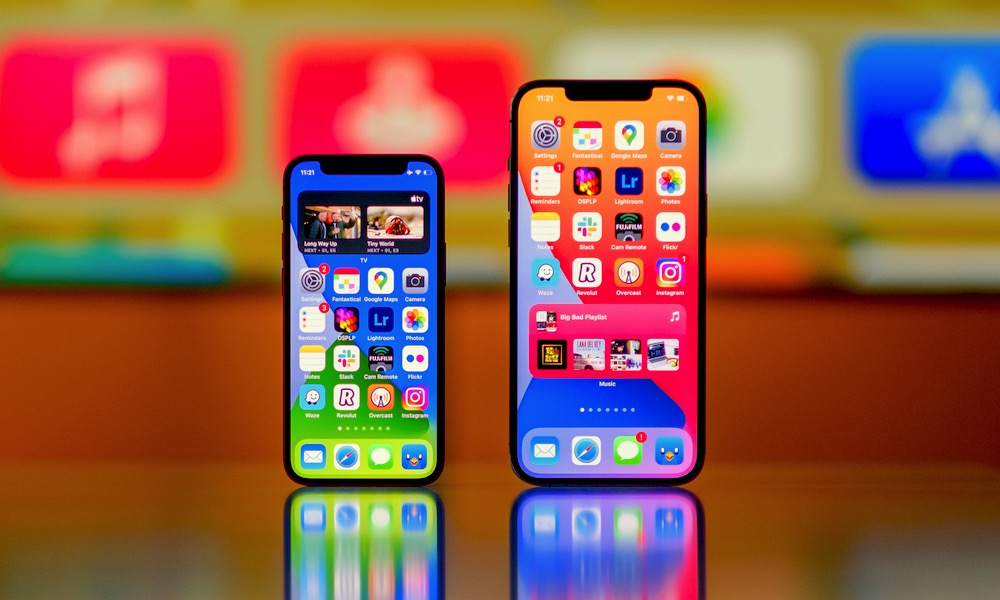Will the 5.4-inch ‘iPhone 13 mini’ Succeed This Time Around?
 Credit: Karlis Dambrans / Shutterstock
Credit: Karlis Dambrans / Shutterstock
Toggle Dark Mode
By all reports, Apple is giving its 5.4-inch iPhone mini one last kick at the can this year as part of the “iPhone 13” lineup, and there’s every reason to believe that this will be the year that’s going to make or break the smaller 5.4-inch iPhone.
For years, there appeared to be a lot of demand for a smaller iPhone. The 2016 iPhone SE sold like hotcakes because of its classic iPhone 5-era design, and many were disappointed when that didn’t continue with the 2020 iPhone SE, which adopted the larger iPhone 8 design instead.
However, last year’s release of Apple’s diminutive 5.4-inch iPhone 12 mini suddenly made us wonder if this supposed demand was little more than a chimera — a vocal minority of iPhone users who remained after the majority had accepted larger iPhones as the norm.
The reality of the iPhone 12 mini is that it became a rare dud for Apple’s iPhone lineup. Not since the colourful plastic iPhone 5c has an iPhone ever flopped so badly. It was the least popular launch week iPhone in years, and by January it had still only barely captured six percent of overall iPhone sales.
In fact, while every other iPhone dominated holiday sales charts — including the older iPhone 11 and iPhone XR models — the iPhone 12 mini didn’t even crack the top ten.
This led to speculation that Apple would cancel the iPhone mini entirely. While there may be some truth to that, this year’s “iPhone 13” family will follow the same four-model lineup as the iPhone 12, which means that we will see a 5.4-inch “iPhone 13 mini” launching this month.
One Last Chance
We may never know whether the 5.4-inch iPhone mini will live on this year because it was already on Apple’s production roadmap, or whether Apple just wants to give it the old college try before giving up on a smaller iPhone entirely, but either way this year will prove whether last year’s release was merely bad timing or if the world really has moved on from its desire for smaller iPhones.
After all, the 2016 iPhone SE landed in an era when Apple had only recently shifted to a larger 4.7-inch model as its standard size, leaving many users overwhelmed by the less pocketable model. However, many also felt that the 4.7-inch iPhone 6 was long overdue, even in 2014.
By 2020, however, the iPhone market had effectively been split into diehard smaller iPhone fans who were still committed to the older 4-inch iPhone SE and those that had decided that it was more important to compromise and get a bigger iPhone to take advantage of four generations of improvements in both performance and features.
So, it’s entirely possible that the 5.4-inch iPhone 12 mini was simply too little, too late — a throwback to a generation that had already moved on.
Why Did the iPhone 12 mini Flop?
That said, we can’t entirely discount several other factors that may have led to the device’s lower uptake, most of which come down to bad timing.
- Even though Apple announced all four iPhone 12 models at the same time, the iPhone 12 mini came along three weeks after its 6.1-inch counterpart. Early adopters had no opportunity to do side-by-side comparisons, and there many more casual iPhone buyers likely didn’t even know a smaller model was coming.
- The iPhone 12 mini also arrived in the shadow of the 2020 iPhone SE. Fans of the 2016 iPhone SE who were hoping for a smaller form factor in its successor may have thrown in the towel and either picked up the new iPhone SE or even gone with an iPhone 11 or iPhone XR long before the 5.4-inch iPhone 12 mini was announced.
- Most iPhone users are on two-year upgrade cycles due to carrier contracts, which means anybody who bought the iPhone 11 in 2019 would not have been eligible to upgrade to any iPhone 12 model in 2020.
In addition to the points above, there’s also the fact that the iPhone 12 mini naturally had poorer battery life than its 6.1-inch counterpart, which may have scared some users away from the smaller model, even after the entire lineup was readily available. Not to mention the mini model is missing the iPhone 12 Pro’s telephoto camera as well as a LiDAR scanner.
Either way, most of these points aren’t going to apply to the “iPhone 13 mini” this time around. Most folks know the smaller 5.4-inch iPhone exists by now, and they’ve had the opportunity to check it out in a store and compare it with the rest of the lineup.
Further, if Apple can improve the battery life on this year’s 5.4-inch iPhone model, it will remove one more barrier to choosing the smaller iPhone.
Sadly, to the disappointment of the six percent of iPhone customers who latched onto the iPhone 12 mini last year, there’s a good chance that the 5.4-inch iPhone mini will soon be riding into the sunset, leaving no direct upgrade path in 2022. With one last chance for the smaller iPhone to turn things around, it’s entirely possible Apple could relent and release an “iPhone 14 mini” next year after all if this year’s 5.4-inch model turns out to be successful.






